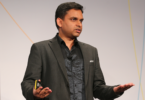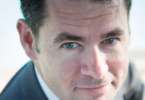This deep dive article is content that would normally only be available to subscribers. Sign up for a four-week free trial to see what you have been missing
Helmut Schoenenberger is co-founder and CEO of UnternehmerTUM, the Center for Innovation and Business Creation at Technische Universität München (TUM). He also serves as TUM’s Vice President Entrepreneurship, as a professor at TUM School of Management and as a member of the advisory board of tech companies. In his roles he focuses on new ventures solve strategy, recruiting, business development and future financing challenges. Schoenenberger, a trained aerospace engineer. previously worked at BMW and Siemens and as a venture capitalist. He recently spoke to the Innovator about creating a common market for innovation in Europe that ties together startups with large corporates and Europe’s family-owned businesses.
Q: What was your motivation for co-founding UnternehmerTUM?
HS: After working as an aerospace engineer at BMW and Siemens I did an MBA at TUM and wrote my thesis on the importance of building an entrepreneurship center in Germany based on the model at Stanford. The university president of TUM liked the idea. Susanne Klatten [an entrepreneur and German billionaire] who was on the university’s advisory board also thought it was a good idea. However, she said if you are going to foster entrepreneurship you should be an entrepreneur yourself and not be on the payroll of the state of Bavaria. So, the center for innovation and business creation was set up as a not-for- profit limited company with a focus on building a bridge between established companies and startups and universities. Susanne Klatten agreed to be UnternehmerTUM’s main shareholder and serves as our chairwoman. My job is to take care of the university’s connections with innovators, regardless of whether they are TUM alumni or from other universities worldwide. So far four unicorns have been supported by the center, including Flixbus, Celonis, Lilium and Personio.
Q: What, in your opinion, is TUM’s secret sauce?
HS: Our secret sauce is our openness and our proximity. Stanford’s campus is close to Sandhill Road, where all the venture capitalists are located. HP, Tesla, and other large companies are also physically located nearby and engaged on campus. That is how it should be: no fences. Like Stanford, TUM has succeeded in creating academic excellence, we are the leading German technical university and one of the top European universities. And, like Stanford, we have created a knowledge triangle – education, research, and entrepreneurship – and have put the three missions on the same level. If you can achieve that you get a strong ecosystem. Our thinking does not stop at the German border. We have 34% international students and many of our startup companies have many different nationalities on their teams. Finally, growth financing for our startups has substantially increased over the last two years. Last year our startups raised over $1 billion and this year our startups have already raised over $2 billion, which is comparable to Stanford. It has been a 20- year journey but UnternehmerTUM has also managed to establish strong connections with large companies. BMW was the first of our corporate partners and the university and its entrepreneurship center have continued to build connections not just to German companies but also companies from the U.S. and elsewhere. GE, for instance, has also become a strong partner. They have built a huge research center, which I can see when I look out of my office window. SAP and Siemens are both building facilities on campus . Furthermore, our ecosystem includes suppliers to the automotive industries based in the Netherlands, Sweden, Switzerland and other European countries. Apple acquired one of our startup companies to form a research group in Munich which has grown and grown. Google and American companies like Intel are also expanding their presence here and Chinese companies are also very active in Munich.
Q: Earlier in July UnternehmerTUM announced a new initiative connecting current and next generation leaders of family-owned businesses to startup and entrepreneurs so that they can co-create new technology driven business models together. How do you see family-owned businesses fitting into the European innovation ecosystem?
HS: More than 80% of the companies are family-run businesses and many of these are tech companies and hidden champions. We believe that it is important to integrate the next generation of family entrepreneurs and understand their challenges and help them with long term plans. They are a key part of the European ecosystem. Family offices have substantial financial resources and are active investors in startups. They can make use of startup products, and in exchange they provide startups with crucial materials and technologies. While large companies have dedicated resources to interact with universities, most mid-sized companies with 500-2000 people do not as yet. For them it is much harder to get connected and really start to innovate. That is why we are starting this program. Along with building competencies and supply chains and ecosystems there is a human side to this. Family business owners have a personal passion for their businesses, and this is something they share with the startup culture. If they can collaborate with startup entrepreneurs and establish a joint vision, they can create great new businesses.
Q: You and DLD conference co-founder Steffi Czerny recently announced that your organizations are teaming on a tour of 27 European cities to create links between innovation centers. How does this fit into your vision for a common innovation network for Europe?
HS: To create a European innovation network we need partnerships on multiple levels to connect the different ecosystems, including universities, entrepreneurship centers, venture capital firms, family offices and family-owned businesses. Our hope is that large established companies will learn to better use the competencies of smaller companies and bundle their strengths. This is how we can create a stronger Europe. The issue is not just about money. It is a question of velocity. Deals need to happen faster, and collaborations should be more agile. Large companies and government procurement offices need to think of Europe as a single market and buy from startups in other European countries, so our startups have an easier time scaling Europe-wide.
Q: How is the planned tour of innovation centers in Europe tied to the EU’s New Bauhaus movement?
HS: The New Bauhaus movement is supporting the new European Green Deal which has sustainability as a main goal. Our vision is to realize the economic potential of sustainability to make our world better. Everyone needs to contribute here: Most of the owners of family-run businesses believe in sustainability and have a long-term vision. The startups are contributing new solutions and academia is fostering these ecosystems to bring all these competencies together.
Q: What is your vision for a common market for innovation in Europe?
HS: In the last 20 years we have achieved 10 X our ecosystem and I am optimistic that in another 10 years we can repeat that. If we achieve that we will be operating at the same speed and on the same level as our colleagues in Silicon Valley. There is so much potential. There are so many good people in Europe. Let’s foster them and help them build great new companies.
This deep dive article is content that would normally only be available to subscribers. Sign up for a four-week free trial to see what you have been missing







